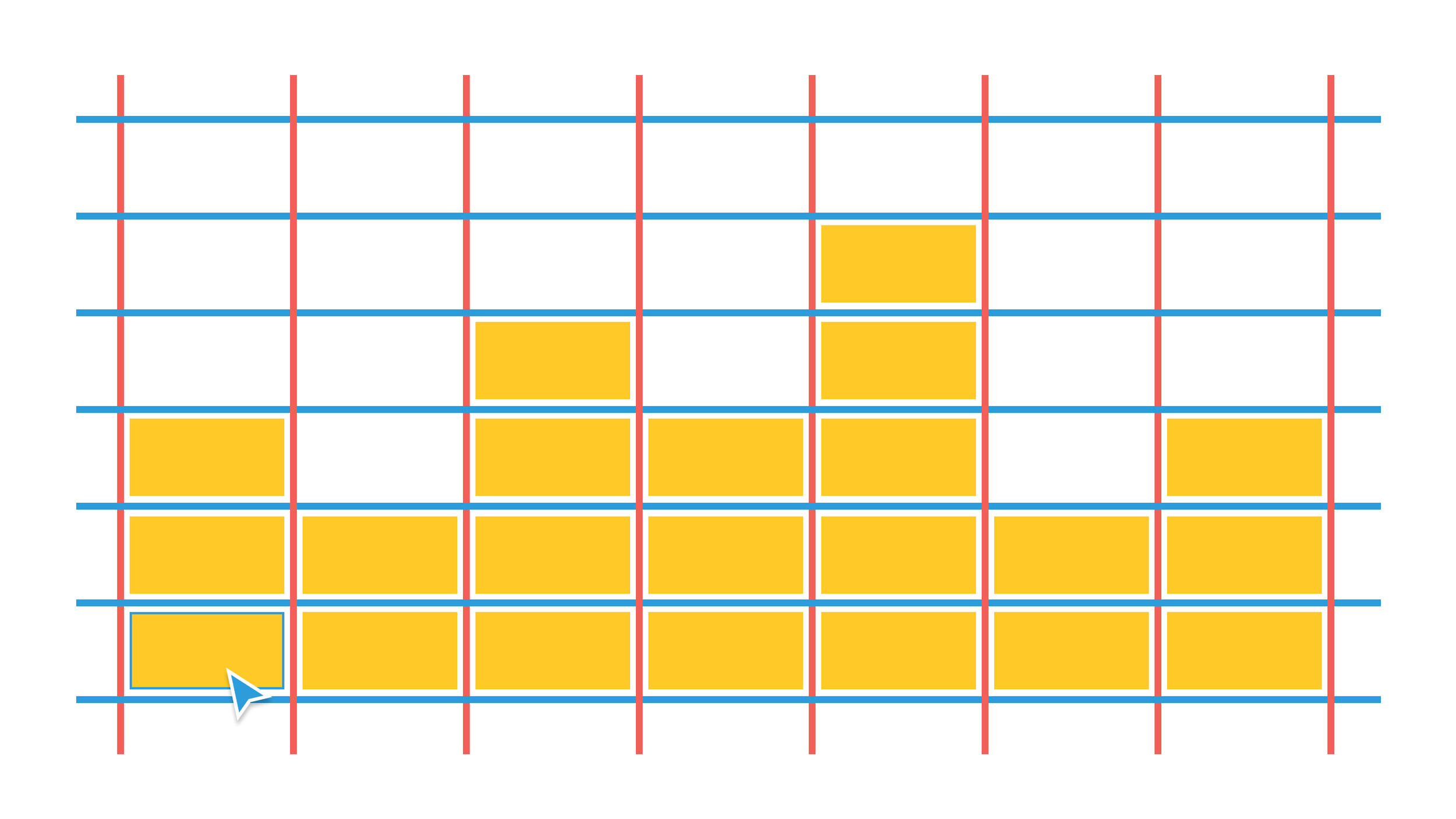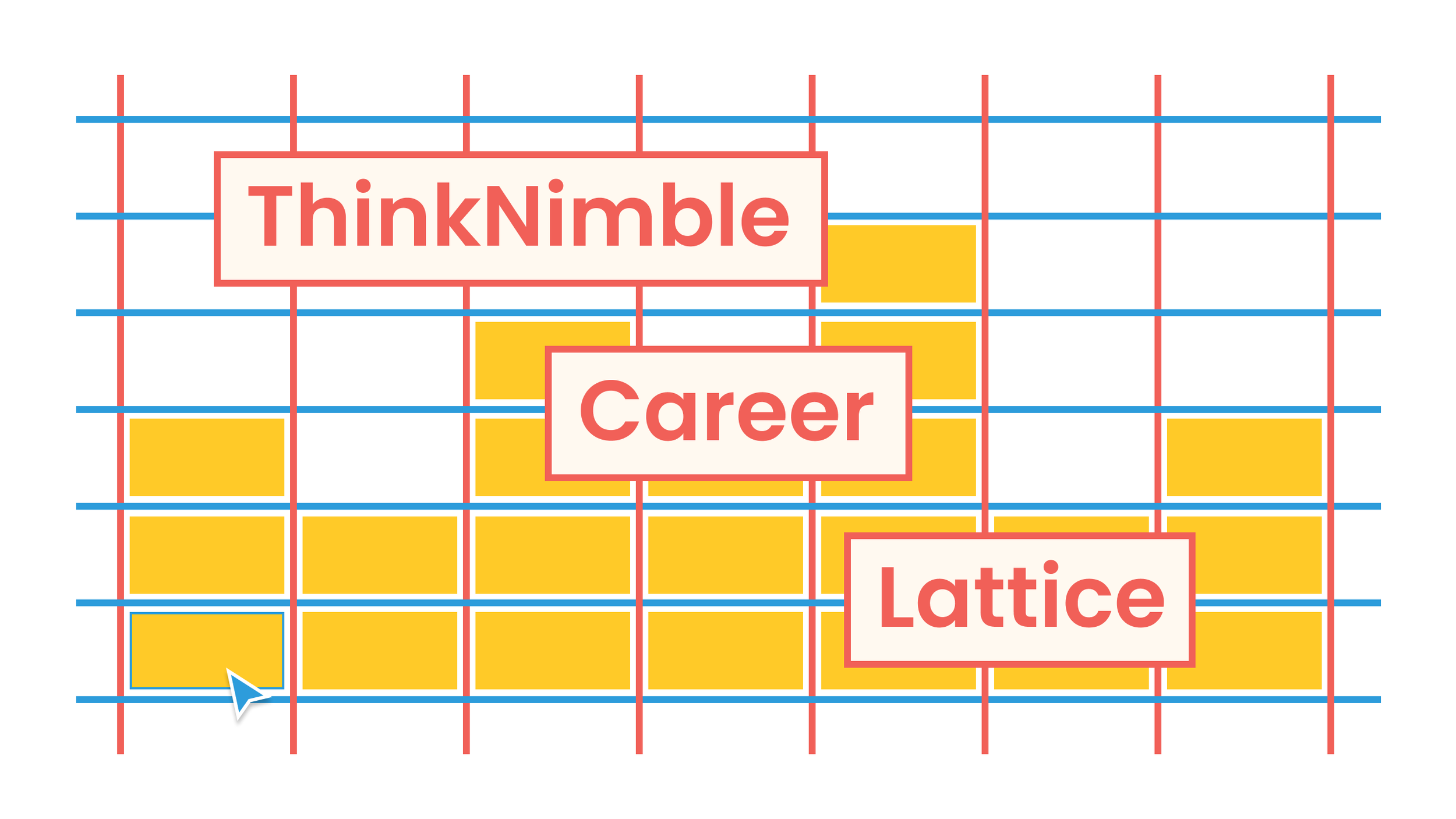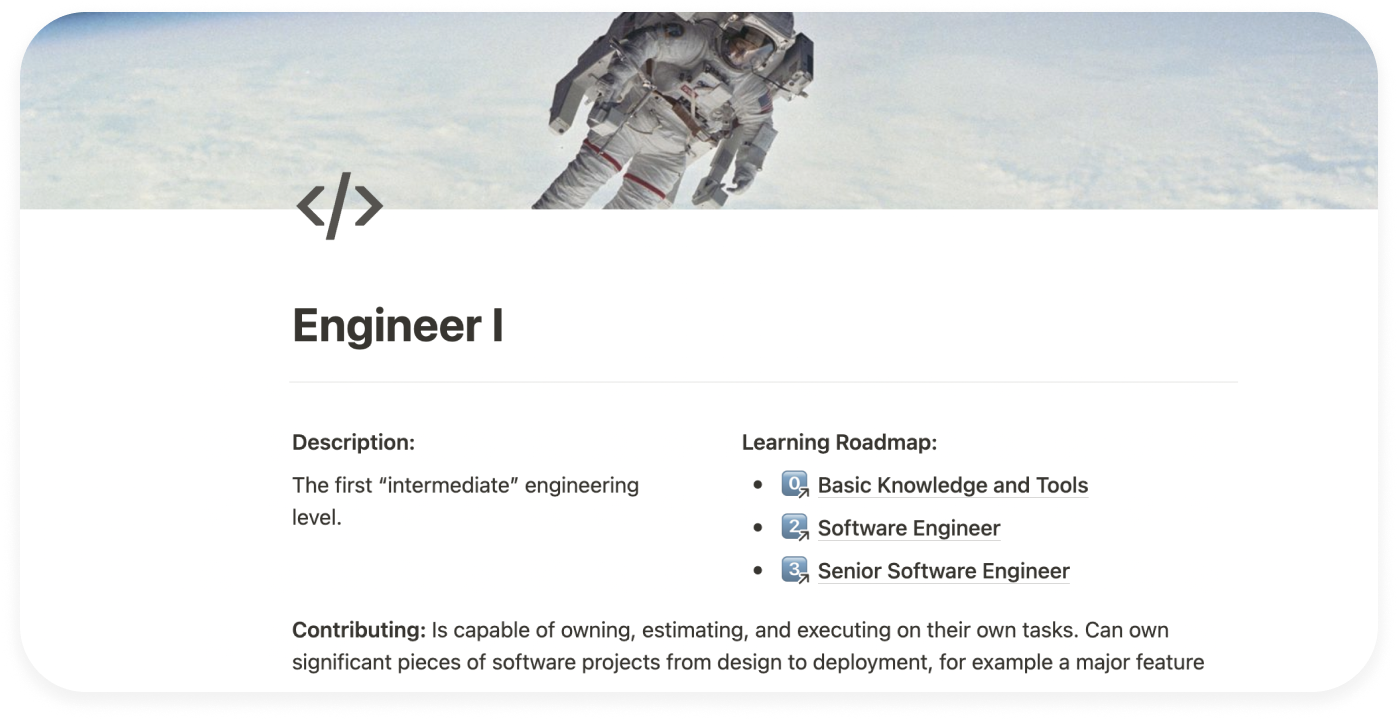ThinkNimble Career Lattice
We’ve had a lot of tough career conversations over the years. Our first few years as a company, we found that our growth track for team members was too linear to fit everyone’s nuanced career objectives. Not everyone wanted to go from junior to intermediate to manager. But these were great engineers, and we wanted them to see a path to an exciting career they love on our team.
After lots of conversations and trial and error, we developed a diversified way to support our engineering team’s growth. It has brought value in many ways - from role clarity to performance and career plans. We can now help our engineers see a future with us because they can see a path to success that they’re excited about.
We are excited to introduce the career lattice.
Career Development 1.0
The Problem with the Career Ladder
You’ve probably heard of the career ladder. Most companies have one, and it’s typical to hear people talk about career advancement as moving up in a company.
Websites like levels.fyi or progression.fyi show you what engineering careers look like at tech giants across the industry, and the careers are all illustrated in this way. As a stack. Going up.
A quick google search proves this widely accepted formula for career development.
But what if people aren’t looking to climb the ladder you laid out? And what if this isn’t the best way to retain talent? A recent study from MIT found that
providing employees with lateral career opportunities is 2.5x more powerful as a predictor of a company’s relative retention rate compared with compensation.
Career ladders box people in to immutable job descriptions and expectations. They tie status and compensation to certain moments like performance reviews promotions, rather than emphasizing actual work contributions and creating a dialog of constant feedback and role evolution that more closely tracks with reality.
Career Development 2.0
So we got to work. If the career ladder one-size-fits-all approach isn’t working, how can we expand options to provide more exciting options to more people? And with this simple question… the career lattice was born.
The Career Lattice
The Career Lattice is a two-dimensional model that separates a person's skills and experience (their level) from their job responsibilities (their role). Unlike the conventional career ladder that focuses on moving "up" in the company, the lattice allows for lateral movement. This empowers individuals to explore various roles and responsibilities. Rather than leaving a company because the path they’re on isn’t what they want, this provides internal opportunity if the path they’re on isn’t the perfect fit or they are curious to obtain new skill sets.
Career Lattice Levels Vs Roles
The main feature of the Career Lattice is that it separates a person’s skills and experience - their “level” - from their job responsibilities - their “role.” Levels are focused first and foremost on what you can contribute given your skills and experience, and roles are changeable based on what you are expected to own and where you are expected to focus day-to-day.
Levels can be viewed as more “permanent” than a role. It describes your skills and experience. So you can only be at one level at a time, and it can only go “up” as you gain skills and experience. It is also probably more likely to translate between companies.
Roles make up the horizontal. These can be more or less significant depending on how broad or narrow your responsibilities are. Roles are what enable the lateral motion in the company. They are more like hats that you can put on, take off, or even create and modify. You’ve probably heard people say “I wear many hats at work.” We call those roles, and you get compensated for them (more on that later).
Career Lattice Levels
The first part of the lattice, levels, define how autonomous we expect our engineers to be. Levels look at the proficiency at which engineers are expected to contribute, what they should be learning and the expectations around how we can help them grow.
Below is an example of how we dive into those specifics with our Engineer I level. Click the image to see the full Level description in Notion.
As an engineer becomes more proficient and autonomous, they move up in level. Levels are a reflection of time spent learning and the resulting competency.
Career Lattice Roles
The second piece of the lattice, roles, dives into your day to day responsibilities. Roles, unlike levels, are very specific to the structure and needs of the company. They change more frequently, and will probably be unique to your situation. We have certain tasks we need accomplished within the team, and roles define who owns which piece of the product development process.
Roles can be broad or narrow, depending on the scope of responsibilities. We measure roles as a percentage of time spent on different responsibilities. This flexible approach allows team members to slide across the organization, enabling them to follow their passions and interests without the need to leave the company.
Below is an example of how we dive into those specifics with our Tech Lead. Click the image to see the full role description in Notion.
Our roles have two tracks - engineering manager and individual contributor. Not everyone wants to be a manager of people, but that shouldn’t keep them from being able to make career and financial progress within the company.
Career Lattice Assignments
In the ThinkNimble career lattice, every engineer is assigned a role + a level. For example, you may be a “Software Engineer” + “Level II” or an “Engineering Manager” + “Senior Engineer II.” This combination of role + level creates shared understanding of expectations across engineers, teammates, and managers.
While levels are reflective of experience (and can’t be changed as easily), engineers can opt into taking on more or less roles as desired and needed by the company. Maybe a Level “Engineer I” would like to take on multiple roles to get experience and see what they like. Or perhaps a Level “Senior Engineer I” would prefer to hone their expertise on one particular role. All are viable options.
Career Lattice Compensation
Within our company, there are no furtive side conversations to uncover the truth about what your peers are making. Two people with the same title will always make the same amount of money.
Since your assignment is commensurate with your role and level, if people feel they are not being compensated enough or fairly, then the conversation is refocused on the objective contribution requirements outlined in the lattice, rather than subjective criteria like feeling they deserve more.
In this design, your level sets your base salary and your role(s) add compensation accordingly.
This has helped us enforce consistent standards and avoid bias and favoritism in the workplace.
Career Lattice 3.0
The career ladder wasn’t working for us, and the career lattice has become a great system for our team. We’ve effectively operated under our career lattice since 2021, and our engineers report that their opportunity for advancement is both exciting and clear within the company. That doesn’t mean it couldn’t be better.
Here are some things we’re still working on:
We’re still working on how to make your progress more clear.
Job responsibilities come and go. You may be leading a team or a project one day and the next find yourself in a different role with fewer responsibilities. Changing compensation can be tough in these situations.
When someone is “coasting” it not only hurts the project, it hurts their teammates, and it hurts themselves - but how do we use the lattice to avoid this?
If you’d like to talk about ways to empower your engineering team or have feedback on the engineering lattice, please contact us.
Bonus Reads
Our engineering levels and roles are informed and inspired by some great minds. We hope you enjoy diving into some of these resources as much as we have:
Holloway - Job Titles & Levels: What Every Software Engineer Needs to Know
Chuck Groom - The Software Engineering Job Ladder
Joel Spolsky - Fog Creek Professional Ladder
Enjoy this article? Sign up for more CTO Insights delivered right to your inbox.








